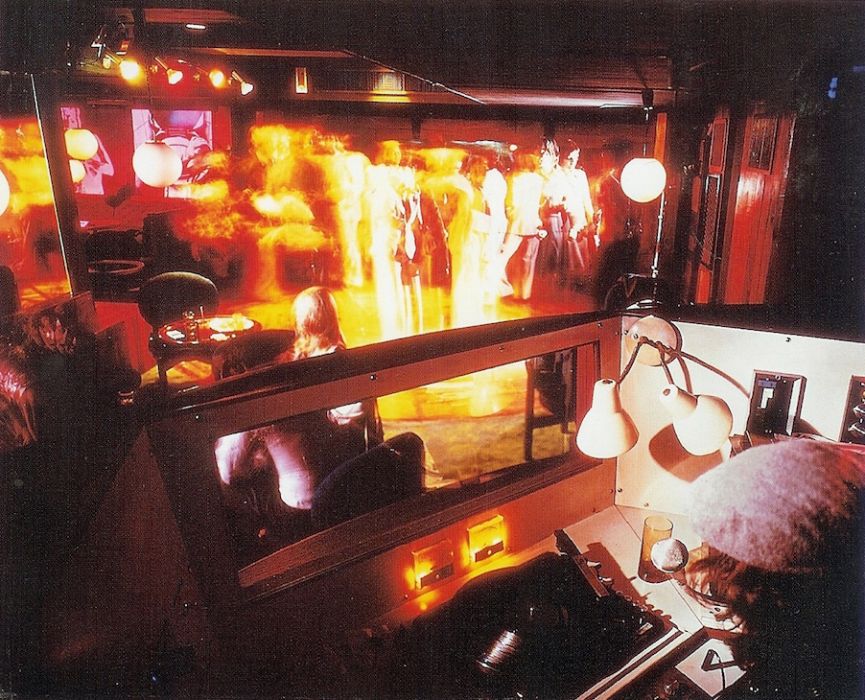Note: This article was written by Nadia Sheng for Trivago.
Lan Kwai Fong (LKF) is lauded as one of the city’s most successful business ventures as, since its inception in the 80s, the cluster of clubs that comprise this entertainment hub are never short of patrons. And there’s no falling short of information when it comes to goings-on in the various entertainment venues that comprise the cluster of streets.
With the population growing by an average of 0.5 percent annually, and an extremely high population density, the city’s appearance is in constant flux, as is her personality. It’s particularly hard for overseas Hongkongers to find the comfort of home when arriving back to the territory after a while spent abroad. That’s why Hongkongers so often look to the past, not to long for the good old days but to tap into the collective memory and, in doing so, finally arrive at the comfort they were looking for.
With an inherent thirst to know where scenesters hung out before the advent of LKF I was introduced to the exciting hotel-club scene of 70s Hong Kong.
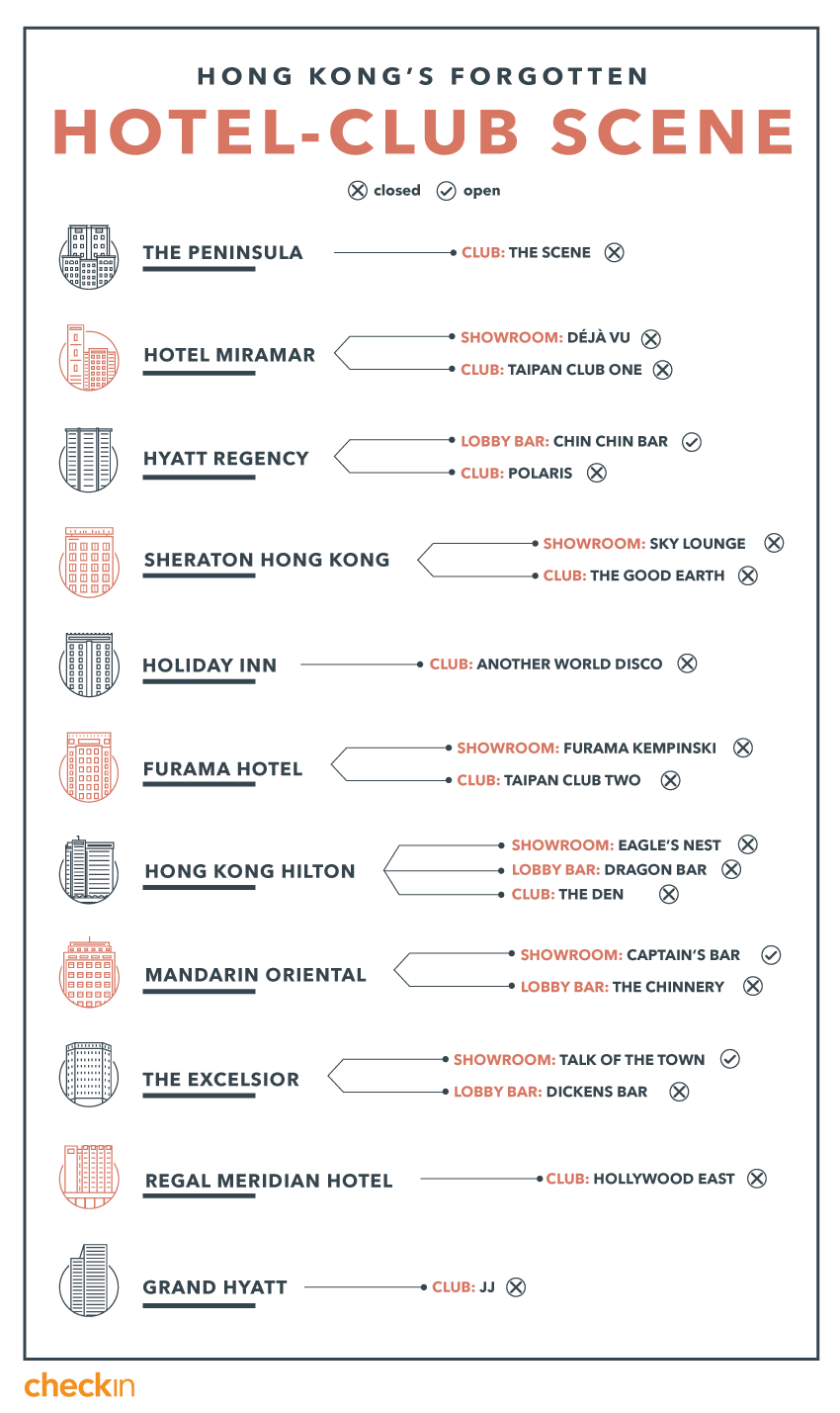
Andrew Bull, founder of Shine Communications, was an eminent DJ in Hong Kong in the 70s and spun at all the hotel clubs. Andrew was preparing a lamb and kale stew on the Great Wall of China when I caught up with him.
Nadia (N): I spoke with all the hotels at which the nightclubs were once a part of. The Mira had little to no information on Taipan Club, and the others had a few sentences jotted down from old newspaper articles that they shared with me. All were keen on providing more information though couldn’t, with no staff remaining today who were around during the 70s, nor information in their archives. This brings me to the conclusion that the treasure-trove of stories are in the possession of those who made these nightclubs a second home, such as yourself. Just to make sure, the Taipan Club really did exist right?
Andrew (A): The Taipan Club was located in the Miramar Shopping Arcade which wasn’t operationally part of the Miramar Hotel. It was a rented retail space with an external tenancy, although its address was the basement of the Miramar Hotel. Taipan Club opened in 1978, almost a year after The Scene Discotheque closed in 1977 following a ten year run in the basement of the legendary Peninsula Hotel.
Michael – now Sir Michael – Kadoorie pioneered the hotel nightclub/discotheque concept in Hong Kong with his 1966 opening of The Peninsula’s “The Scene Discotheque” located in the basement on the Middle Road side of the hotel and run under the chicly swinging management of DJ/Dancer/Model Beth Smith – still a fixture in HK under her married name Beth Narain. Sir Michael was a contemporary of the swinging 60s in London, and was no doubt inspired by sophisticated nighteries there, such as Tramp, Annabels, you name it. Try to chat to him on the subject if you can.
N: How did you start out DJ-ing in Hong Kong? Where did you DJ?
A: *laughs* I was pretty much the only club DJ in Hong Kong in the early 70s, as the club scene had swung from discos playing vinyl discs in the 60s, back to live band combos in the major hotels by the early to mid-70s. I began with DJ radio shows on RTHK and then moved through all the hip night spots in TST.
Together with the audience that I found we ushered the town into the era of the Saturday Night Fever global disco phenomenon – which changed the game entirely.
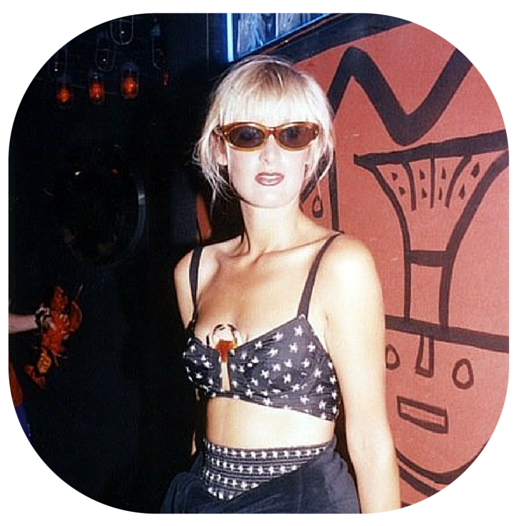
Fashion forward.
N: The only popular hotel-bars today are both posh and old-world (the sort where you’d swish around a brandy to the sound of a lounge singer) or hip and chic (futuristic fare and flare) “rooftop bars”. I don’t think any are nightclubs. Then you have Macau next door. Here, virtually all the city’s main nightclubs are in hotels. While people are a product of the times, do you think people were happier with the setup back then or now since they have, in essence, their occupied area of Central?
A: It depends on who you ask, but the mid 70s to the mid 80s was a greatly euphoric time for us, that’s for sure. White Rolls-Royces. Panama hats. Sun tans and gold chains. The crowd – a mix of Vietnam war R’n’R guys, New York fashion mavens, up-for-it Cathay crew and ahead-of-the-curve local scenester wannabes made for a real community, built around an unmistakable sense of “right place/right time”. There was huge fun to be had if you made yourself part of the group. This was Hong Kong (especially Kowloon) in the period following the various liberations of the ’60s, yet before AIDS was anything anyone had ever heard of. I do find people are almost universally smiling in old party photos from that era – for very good reason. That’s not to say society was universally in party mode in 70s HK – far from it. Social issues including a hard drug epidemic among the older working-class local generation continued to provide a gritty backdrop to the emerging new hedonistic sophistications.
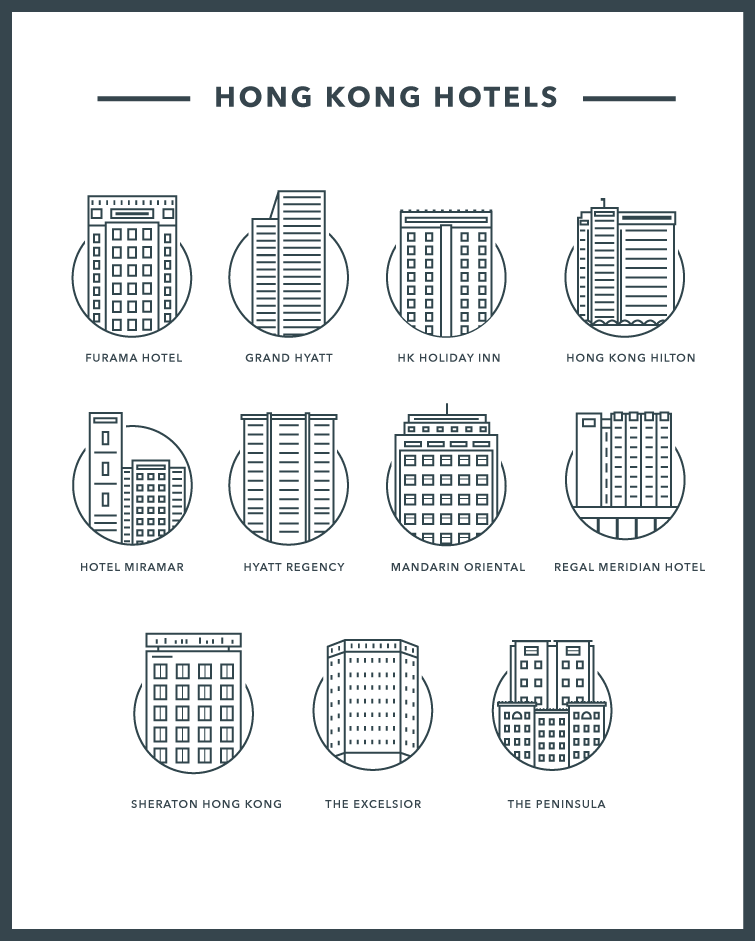
Kowloon at night had a significantly different energy before the opening of the original Cross-Harbour Tunnel in 1972. That, coupled with the location of the old Kai Tak Airport made hotels in Tsim Sha Tsui (TST) – convenient as they were for the Kwun Tong factory district – the epicentre for business and pleasure. The international merchants and designers that needed to fly in and out of the territory would almost always choose to stay on Kowloon-side. “Made in Hong Kong” was, in reality, “Made in Kowloon”. Certainly, Kowloon was way more happening in terms of nightlife. There was no Lan Kwai Fong in that era, and apart from Wan Chai and some 5-star hotel bars, Hong Kong-side had significantly less of a party buzz than Kowloon. The island was all about the colonial government, the big English “Hongs” such as Jardine’s, Swire’s and Hutchison, and of course, the mighty Hong Kong & Shanghai Banking Corporation.
By contrast, today’s Hong Kong Island has a highly evolved modern club scene: Dragon-i, Magnum, Drop, Kee Club, Volar, Cé La Vi, Play and many, many others of both high and decidedly “low” standards abound. One era doesn’t stand out as “better” than the other, it’s just deliciously different. I would say the Golden Age of Hong Kong clubbing may have actually come back around. Every decade has its own take on meeting the people’s universal desire to connect, to see and be seen and to lose their regular day-selves in the spirit of the party. The present day is as hard at it as ever.
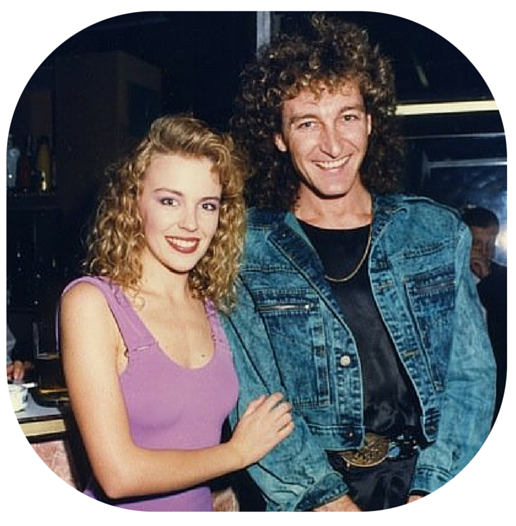
Kylie Minogue rockin’ her 80s perm.
N: Speaking of old-world, do you think hotels of today are of the same quality as before?
A: Without question the demographics of luxury hotel clientele have changed over time. In the era we have been discussing it seemed that mostly the wealthy, perhaps a mix of self-made people and older moneyed types, were the primary source of clients for Hong Kong’s numerous luxury hotels. Today a luxury hotel’s audience is broader, encompassing a younger, middle-income crowd, and what’s considered qualitative has changed accordingly.
On an operational level many things have also changed in the last forty-odd years. The job description of “hotel manager”, for instance, has probably changed quite a lot since the 70s.
If a 70s hotel had a nightspot with a popular local reputation on site then supervising it would require management to don many different hats and to be on call at all hours. On top of overall hotel operations, management would very likely have had to oversee the daily running of the club outlet. Depending on how much of a “hotspot” the place had become, this could be a source of never ending distraction and take up as much time as the rest of the job. Daily dealings with the police on licensing and security issues (back then men dancing with men was still very much banned, for example) and sorting out every imaginable bar staff and customer issue took a toll on a manager’s patience and sanity.
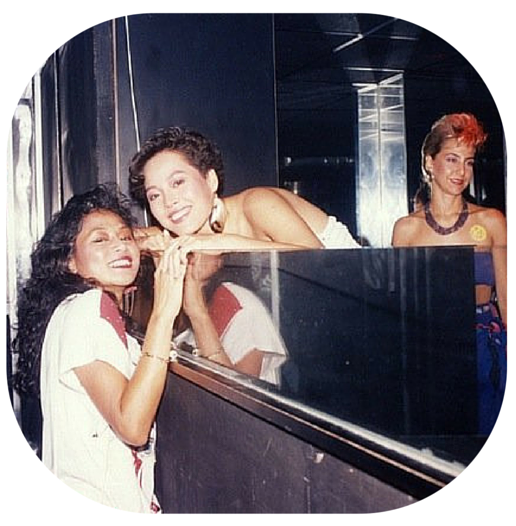
Big hair don’t care
N: Passing-through hotel guests must have been a fixture to the nightclubs. Did all sorts of hotel patron join in the party or was it also only the in-crowd that represented the Hongkongers that went to the clubs?
A: Hotel discos went after a relatively high-end trade in keeping with the image of their brands. Guests in the fashion industry who were used to partying in New York pre-Studio 54 were always seen at The Scene in the evenings while in town. Design icons Kenzo Takada, Pinky Wolman and Dianne Beaudry and menswear author Alan Flusser were all among the international jet set that passed through the club. Imelda Marcos, George Hamilton, singer Matt Munro or visiting actors like George Burns might drop in after dinner at Chesa or Gaddis, often accompanied by the larger than life figure of Rolf, the legendary Gaddi’s maître d’.
International cool cats interacted with happening “localites” and made “The Scene” happen. The Hong Kong crowd was represented by designers like Eddie Lau and Bobby To, freshly arrived stylist Kim Robinson, A-list local models like Paulona Chai, Grace Yu and Anita Chiu, football legend Derek “Jesus” Currie and many more. Sir Run Run Shaw himself could occasionally be seen holding court at the largest VIP table, grudgingly vacated by feisty Scotsman Dave Gilhooly, the longstanding irascible manager of the club. This was the back end of the 60s, right through until 1977.
N: Did the crowd that brought vogue to Hong Kong naturally transition from the hotel-clubs to the clubs of LKF? Were there many displaced? What’s become of this generation (there aren’t as many stories written about 70s Hong Kong as there are memoirs about 50s Hong Kong)? I get the impression people from this generation aren’t too comfortable sharing their stories – what went on back then!?
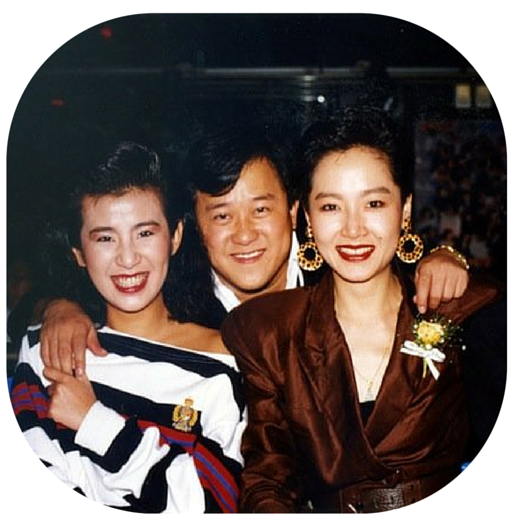
Sandra Ng (L) and Eric Tsang (C)
A: Today, the 70s are considered a decade of emergence. A “pivot of change” in world social history. Back then we imagined it was similar to what the 40s or 20s felt like to previous nightlife generations. Disco Disco, the first to open in Lan Kwai Fong and the opening of the MTR began to put Hong Kong-side firmly on the map. The crowd is not in the habit of looking back.
N: Just so we can better imagine the past, which were the hippest clubs to go to? All must have had their own flavor. Can you tell me what each was like?
A: They were all destinations of desire. A typical evening following your office day, junk trip or, perhaps to follow a shopping spree at Swank Shop, or a movie in Ocean Terminal, might be dinner at Hugo’s in the Hyatt Regency Kowloon, The San Francisco Steakhouse, the Pink Giraffe in the Sheraton, or the legendary French brasserie Au Trou Normand. I myself used to go to La Taverna on Ashley Road for dinner almost nightly, if not then perhaps Jimmy’s Kitchen in Hotung House, Sandy Walker’s Lindy’s in Peking Road or the old Hong Kong Hotel coffee shop.
Post dinner you might hit the Chin Chin bar for drinks in the Hyatt Regency, then maybe up to Polaris or over to Good Earth in the Sheraton. If you survived until midnight or so you would inevitably find your way down to The Scene where you would meet all the other refugees from various bar scenes or overflowing grill room liqueur carts around town. If you survived The Scene, or if it wasn’t for you, then semi-elegant slumming was readily available in the shape of Hankow Road’s Yellow Submarine, topless action at the Bottoms Up, an old jukebox with 50s throwback hostess action at Red Lips Bar, “Japanese” hostess places like Club Kokusai or Lock Road’s The Professional Club were available prior to one’s disappearance to the late night joints like The Solmar on Kimberley Road until daylight. If you were hiding out, then a quiet spot for you was probably going to be the Kowloon Godown in an alley off Chatham Road, venue for many a tryst.
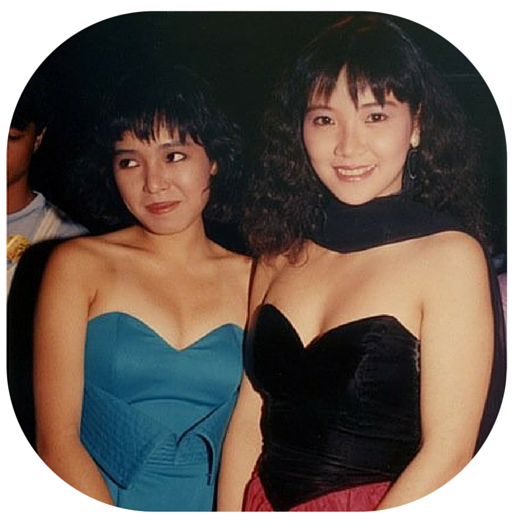
We vote to bring back the tube top + neck scarf look.
If you were on Hong Kong-side you might have begun with cocktails at the Dragon Boat Bar in the Hong Kong Hilton’s lobby, or across the cricket pitch to the downstairs world full of HSBC newbie expats, The Godown, in the basement of Sutherland House (also home of the FCC); or perhaps across at the Dickens Bar at the Excelsior or the Captain’s Bar in the Mandarin Oriental – or the newly opened Bull and Bear pub in Hutchison House. In those days you could opt to catch dinner and a show at either The Harbour Room in the Mandarin or the Eagle’s Nest in the penthouse of the Hong Kong Hilton. World famous stars such as Judy Garland and Eartha Kitt were often showcased there, as were such local stars as Frances Yip, Michael Remedios, Rebecca Pan and many many others.
If dinner and a show was too much then maybe one would opt for a swanky dinner at Cafe D’Amigo in Happy Valley, the revolving restaurant atop the Furama or the grills in either the Hilton, Mandarin or Furama. Your choices for going on after supper were basically to head down to the big hotel discos like The Den in the Hilton, Electric Radio in the Excelsior or Taipan Two in the Furama. Towards the end of the 70s The Manhattan opened in Elizabeth House Causeway Bay and Disco Disco opened up Lan Kwai Fong. Both were game changers and era-beginners in their own way, and deserve their own story!
Words: Nadia Sheng/Trivago
Photos: Andrew Bull
